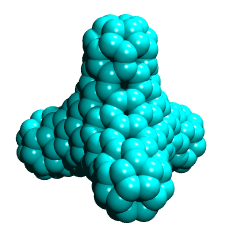Chapter 11 - The World of Atoms
Molecules and condensed matter

Gas laws
Microscopic origin of pressure
End-on dipole
Induced dipole
6-12 potential
Not really 12
van der Waals equation
Is pressure a force or an energy?
Animation I
Animation II
Molecule in a room
Probability formulation
EBK box quantization
Energy levels
Classical and BSW
Mean position
Mean square position
Measurements
Variance and standard deviation
Variance of distributions
Experimental testing
Harmonic oscillator (Sect. 2.3.3)
Generalized formulation
SHO average values
Action quantization
Classical and BSW
Summary
Anharmonic well
Perturbation expansion
Accepted QM solution
Animation
Comparison with box and Kepler
Generalize to numerical solution of arbitrary potentials
Formulation
Exercise
Solution
Semiclassical Quantization (Sect. 2.3)
BSW Quantization
EKB Quantization
EKB References
Sommerfeld and Caustics
Caustic animation
In original language
A.Einstein, Deutsche Physikalische Gesellschaft
19 (1917).
Stone essay
J.B. Keller, Ann. Phys. (NY) 4, 180 (1958).
Semiclassical self-consistent fields
Molecular bonding
Ionic/covalent
Covalent bonds
H2 applet
Classical and QM dwell times
pp and sp bonding
Water, ammonia and methane
sp hybrids
Caltrops
continued
Greenhouse tetrahedrons
Central angle of a tetrahedron
Molecular spectra
Vibration and rotation
Level structure
HCl spectrum
Crystalline solids
Simple cubic
Face-centered cubic
Body-centered cubic
Diamond cell
Diamond separation
Hexagonal close-packed structure
Hexagonal packing fraction
Ionic spacing
Discussion
Model for current flow
Current flow
Drift and thermal speeds
Fermi speeds
Combined motions
Acceleration between collisions
Viscous drag
Ohm's Law
Mean free path and collision time
Drift speed
Relativistic speed?
Magnetic fields and relativity
Ohm's law and thermal conductivity
[Current Position]
The Maxwell-Boltzmann Wiedemann-Franz Law
The Fermi-Dirac Wiedemann-Franz Law
Gravitational analogy
Capacitors and Resistors

